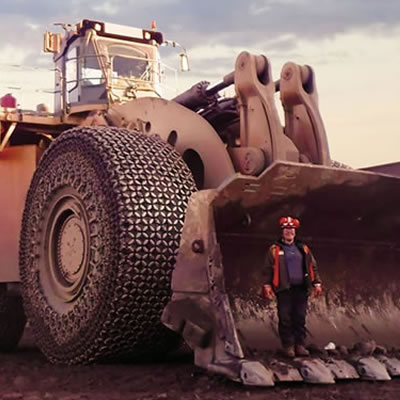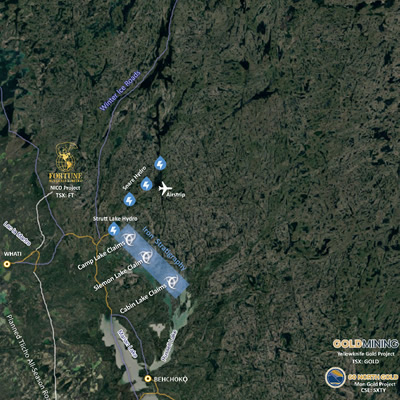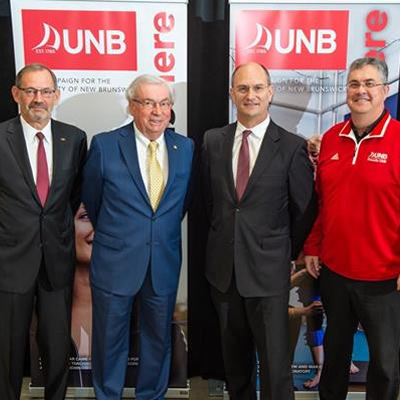Driving innovation
Rare earth elements and rare metals are the keys to advances in the medical industry, green technology and electronics

Tents are set up at the base camp at Thor Lake in the Northwest Territories, as drilling, exploration and development continue in the search for rare earth elements and rare metals. — Photo courtesy Avalon Rare Metals Inc.
Don Bubar, the CEO of Avalon Rare Metals, has years of experience in the exploration and geology fields. He joined the Avalon team in 1995 with the intention of turning the company into a valuable and viable pursuit. Back then, Avalon was focused on gold, but in October 1996, Avalon picked up the Separation Rapids property 70 kilometres north of Kenora, Ontario. This property showed to have one of the largest complex-type rare metal pegmatite deposits in the world, but Bubar said that at the time, no one was interested in rare metals. However, in 1997 when the Bre-X Minerals scandal happened, gold tanked, and Separation Rapids was the only project that Avalon could make money on. To capitalize on its rare metals property, Avalon began promoting some of the growing uses for rare metals—such as lithium for ion batteries and tantalum for cellphone capacitors.
Finding value in the rare
Over the years, Avalon Rare Metals has narrowed its focus and now specializes solely in rare metal and rare earth element deposits in Canada. Shortly after Avalon took its Separation Rapids project through the pre-feasibility stage, David Trueman and Chris Petterson—two people who worked with Bubar at Separation Rapids—informed Bubar that they had their eyes on a project near Thor Lake in the Northwest Territories. The two men said that if this property became available, Avalon should look at what it would take to acquire it.
"By 2004, (the property) had changed hands a number of times," said Bubar. "It ended up as an orphan project in a company called Beta Minerals and they were not interested in advancing it, so they were trying to divest it. In 2005, no one was paying attention to rare earths except for people like ourselves. We were the only party that showed interest in it and we bought it from (Beta Minerals) for $300,000 in stock. Shortly thereafter, we recognized the rare earth component and the significance of it."
The property in Thor Lake has since become Avalon's flagship project. It was named the Nechalacho Rare Earth Element Deposit in a formal First Nations ceremony hosted by the Yellowknife Dene chief, Edward Sangris, and chief Ted Tsetta. Nechalacho means "a point where you can almost dock," as the area is bordered with a rocky shoreline and steep cliffs.
Going with the heavyweights
The Nechalacho property is one of the largest undeveloped rare earth element (REE) resources in the world. What makes the Nechalacho property unique is its enrichment in the more valuable heavy rare earth elements (HREE), which are integral to advances in green energy, medicine and electronics. The Nechalacho property is one of the few potential sources of these elements to be discovered outside China, which currently is the source of more than 95 per cent of the world's supply of REEs.
"We realized early on that the (Nechalacho deposit) had an unusual balance in the light and heavy rare earths," said Bubar. "This property had a higher proportion of heavy earths than most deposits, so we started to move the project forward . . . Basically, the (elements) that are the most important in the marketplace are dysprosium, terbium and erbium, and they are enriched at Thor Lake at levels higher than a typical light rare earth-dominant deposit. They are the ones that are presenting the opportunity."
Not so rare
Ian London, who works with Avalon in market development and energy issues, said that there are 17 rare earth elements. He was quick to point out that the name is misleading because rare earths can be found everywhere. However, they are scarce in terms of large concentrations—something that is needed to make these rare earths economically extractable—and they occur in different proportions depending on the deposit.
"(Rare earths) are a unique group of elements that have optical characteristics and magnetic, chemical and physical properties," said London, "and they are all found together. All 17 metals (are) always found together but always in different proportions . . . We have the highest content of heavies, which are a lot rarer than the light. About 98 per cent of all rare earths found are light, but the real magic—or vitamins—are the heavy earths. You need sprinkles of them in these new metal alloys, but it is the sprinkles that make them work."
New science in the everyday world
London calls what he does a world of new science. When one looks at the various uses for these rare earths, it is apparent that his statement couldn't be more accurate. Neodymium and dysprosium, for example, are two rare earths that have revolutionized the miniaturization of electronics, while zirconium is a rare earth that is used in nuclear power reactors. Then there is thulium, used in nuclear medicine, and holmium, used in solid-state laser technologies. Terbium is a component of green phosphors applied in LEDs and televisions, fluorescent lamps and permanent magnets, and erbium is used in nuclear power reactors and certain dermatological and dental applications. Out of all of the rare earths, however, terbium and dysprosium are the two heavy rare metals in the most demand.
Another boom the rare earths industry is seeing is the rise in demand for lithium, the primary metal that makes up lithium ion batteries.
"If you think of everything that has batteries and motors—like power drills, screwdrivers, power staplers, car batteries, your cellphone battery, your laptop, your iPod—everything is being electrified," said London. "Lithium is the primary metal that goes into the next generation of batteries. Why? Because it has the highest energy density compared to all of the other metals. You can charge it with more energy with the least amount of material . . . (Years ago) a guy on my son's basketball team used to bring his cellphone to games and drag his battery pack behind him in a wagon . . . his battery lasted an hour. Now, your battery lasts for days. That is because of the lithium ion battery."




